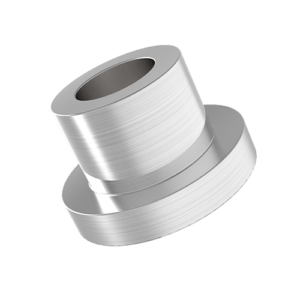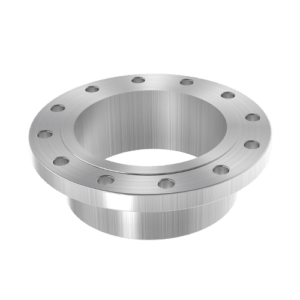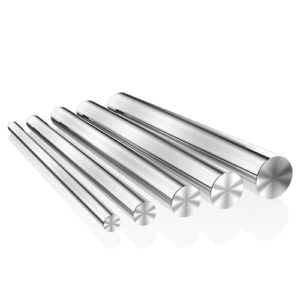Welcome to My Blog!
Before we dive into the content, I’d love for you to join me on my social media platforms where I share more insights, engage with the community, and post updates. Here’s how you can connect with me:
Facebook:https://www.facebook.com/profile.php?id=100090063158454
Now, let’s get started on our journey together. I hope you find the content here insightful, engaging, and valuable.
Table of Contents
Introduction

Before diving into the detailed comparison, it’s essential to grasp the basics of 302 and 304 stainless steel. Both belong to the 300 series of austenitic stainless steels and are often seen as similar in terms of their appearance and composition. However, subtle differences can have a significant impact on their performance in various applications.
302 stainless steel is known for its superior corrosion resistance and is primarily used in environments that don’t demand as much resistance to high-temperature oxidation. On the other hand, 304 stainless steel is more widely used in industries that require robust resistance to a broader range of corrosive agents, including both acidic and alkaline environments.
Chemical Composition of 302 vs 304 Stainless Steel
The chemical composition of stainless steel plays a crucial role in determining its mechanical properties, such as strength, hardness, and resistance to corrosion. Let’s explore the key differences in the composition of 302 vs 304 stainless steel.
302 stainless steel primarily consists of iron, chromium (18-20%), nickel (8-10%), and a small amount of manganese and carbon. This combination provides good corrosion resistance, though it may not perform as well in extreme conditions compared to 304 stainless steel.
304 stainless steel contains similar elements, with chromium (18-20%) and nickel (8-10%) as its core components. However, it also has slightly more manganese and less carbon compared to 302 stainless steel, which enhances its weldability and resistance to corrosion, particularly in high-stress environments.
| Property | 302 Stainless Steel | 304 Stainless Steel |
|---|---|---|
| Chromium Content | 18-20% | 18-20% |
| Nickel Content | 8-10% | 8-10% |
| Carbon Content | 0.15% | 0.08% |
| Manganese Content | 2% | 2% |
| Corrosion Resistance | Good in moderate environments | Excellent, better for harsh environments |
| Weldability | Good, but not as strong as 304 | Excellent |
Strength and Durability: 302 vs 304 Stainless Steel

One of the most critical factors in choosing between 302 and 304 stainless steel is their strength and durability. Both materials have high tensile strength, making them suitable for heavy-duty applications. However, their resistance to corrosion and ability to withstand high stress varies.
302 stainless steel offers a good balance of strength and flexibility, making it an excellent choice for parts subjected to moderate wear and tear. It’s particularly effective in applications where corrosion isn’t a primary concern.
304 stainless steel, on the other hand, is known for its superior strength and durability. Its excellent corrosion resistance makes it a preferred choice for industries where parts are exposed to harsh chemicals, moisture, or extreme temperatures. Additionally, the lower carbon content in 304 helps it perform better when welded, further enhancing its versatility in complex applications.
Applications of 302 vs 304 Stainless Steel
The applications of 302 and 304 stainless steel vary depending on the required properties. Understanding where each material excels will help you make the best choice for your project.
Common Uses of 302 Stainless Steel
302 stainless steel is typically used in situations where resistance to corrosion is important but not critical. Common applications include:
- Springs
- Washers
- Electrical contacts
- Clamps
- Cables and wire
Common Uses of 304 Stainless Steel
304 stainless steel is often used in environments that demand higher corrosion resistance and strength. It is widely used in:
- Kitchen equipment (e.g., sinks, countertops)
- Food processing equipment
- Chemical containers and tanks
- Medical devices
- Architectural structures
Key Differences Between 302 vs 304 Stainless Steel

When choosing between 302 and 304 stainless steel, it’s crucial to consider the specific needs of your project. Below are some of the key differences:
- Corrosion Resistance: 304 stainless steel offers better resistance to a wider range of corrosive agents than 302 stainless steel. It performs well in harsher environments, including acidic and alkaline substances.
- Cost: 302 stainless steel tends to be slightly less expensive than 304, which could be an important factor if you’re working within a budget and corrosion resistance is not a top priority.
- Weldability: While both materials are weldable, 304 stainless steel’s lower carbon content improves its weldability and reduces the risk of cracking, making it a better choice for complex welded projects.
- Formability: Both grades are highly formable, but 304 stainless steel’s improved corrosion resistance and lower carbon content make it more suitable for manufacturing applications that require precise, consistent results over time.
Conclusion

Choosing between 302 vs 304 stainless steel depends largely on the specific requirements of your application. If you’re looking for a material with a balance of strength, flexibility, and moderate corrosion resistance, 302 stainless steel is an excellent choice. However, if your project requires superior corrosion resistance and durability, particularly in harsh environments, 304 stainless steel should be the material of choice.
While both materials offer high strength and durability, 304 stainless steel stands out for its enhanced ability to resist corrosion, making it ideal for industries such as food processing, medical equipment, and chemical handling.
FAQ
Is 302 stainless steel better than 304 for high-temperature applications?
302 stainless steel can handle moderate temperatures, but 304 stainless steel offers better high-temperature performance, especially in environments with harsh chemicals.
What is the primary reason to choose 304 stainless steel over 302?
The main advantage of 304 stainless steel over 302 is its superior corrosion resistance, making it ideal for applications in more aggressive environments.
Can I weld 302 stainless steel and 304 stainless steel together?
Yes, both materials can be welded together. However, due to its lower carbon content, 304 stainless steel generally offers better weldability and less risk of cracking.
How does the cost compare between 302 and 304 stainless steel?
302 stainless steel is typically more affordable than 304, making it a good choice for less demanding applications.
Which stainless steel is used in kitchen equipment?
304 stainless steel is the most commonly used material for kitchen equipment due to its excellent corrosion resistance, especially in food and beverage applications.
